Editor’s note: This article was originally published by our colleagues at Hagerty US. We’re republishing it here not just because so many of you like to read about MGs, but also because it’s an interesting window into how the marque is perceived on the other side of the pond.
MG turns 100 this year. At that age, the brand has every right to smell a little musty, like a library full of Dickens and Austen. Instead – and even as its current incarnation turns to EVs – the octagonal badge remains all hot metal and sun-warmed leather, perhaps with a dash of oil. The smell, in other words, of vintage machines being exercised.
MGs are drivers’ cars. And yes, they are amateur mechanics’ cars. A 1967 MGB has lived in our family since I was six months old, so I make no bones about the necessity of carrying spares in the trunk on any MG road trip. And some duct tape. And a really large hammer, even if only for threatening a recalcitrant machine. Even so, you hear it from MG owners all the time: “I bought it to drive it.” “I built it for touring.” “I don’t drive it as much as I used to, but here are the photos from when I took it to Florida.”
You can tour in a Bentley or an Aston, of course. More than any other English marque, however, MG flies the flag for the everyman vintage experience. The company’s cars reward and confound and delight and occasionally leave you stranded. They get under your skin and fingernails.
On the 100th birthday of the icon that grew from Cecil Kimber and Morris Garages, what better way to celebrate than actually getting out in a handful of the brand’s greatest hits?
Not the Beginning – But Close
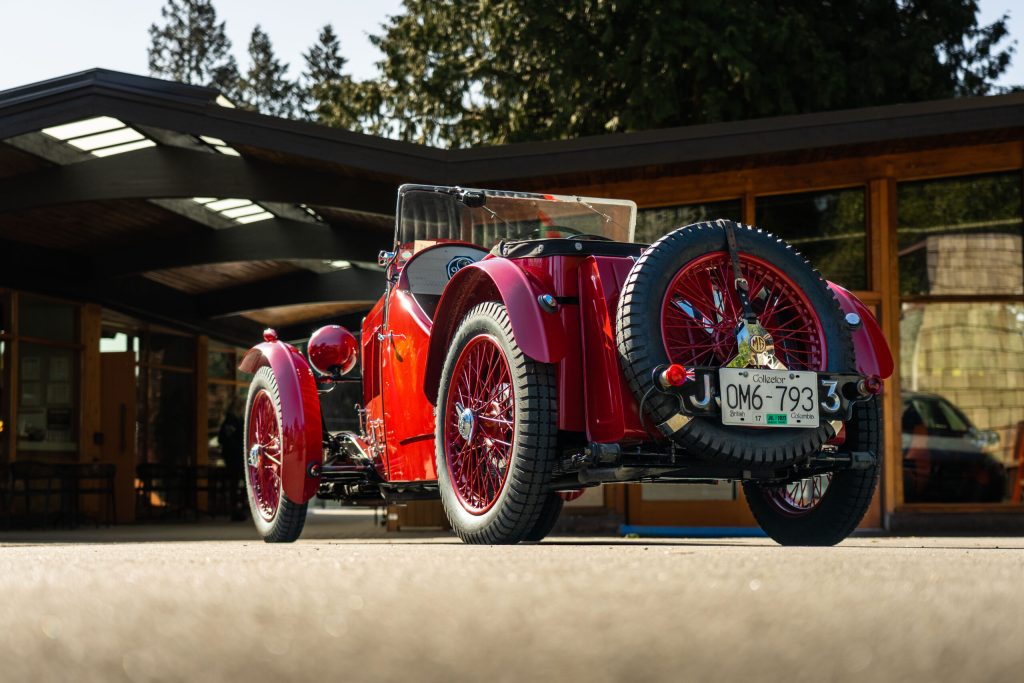
1932–1934 MG J2 Midget
The plucky little J2 Midget set the template for sporting MGs. Plenty of swift and nimble machines had previously issued forth from England’s Morris Garages, but the J2’s recipe would carry the company for the next 20 years. At its 1932 launch, the car was agile, affordable, and fun. It still is.
Our featured example is a 1933 model belonging to Dr. Robert Follows of West Vancouver. Many machines of greater historical significance have passed through Dr. Follows’s hands, but only this J2 reminds him of his youth as a medical student, when he and his roommates cluttered up a side street with all manner of work-in-progress English sports cars.
Naturally, Dr. Follows’s car has been restored to a greater standard than a university student could afford. It’s a lovely thing, period-correct red lacquer shining in the spring sun and not too glossy. The 847cc four-cylinder bursts into song without stumble, and off down the road this tiny car scoots.
Sold mostly as an open roadster with cut-down doors, the J-Type is infused with MG’s racing heritage. Its overhead-cam engine is fairly advanced for the era, with twin SU carburettors and a crossflow head. Power is slight by modern standards, just 36bhp at 5500rpm. But then, the J2 only weighs around 500kg. Some magazine tests quoted a top speed of just above 80 mph – others were closer to 60 – though the standard cable-actuated drum brakes undoubtedly made excursions to either figure only for the very brave.
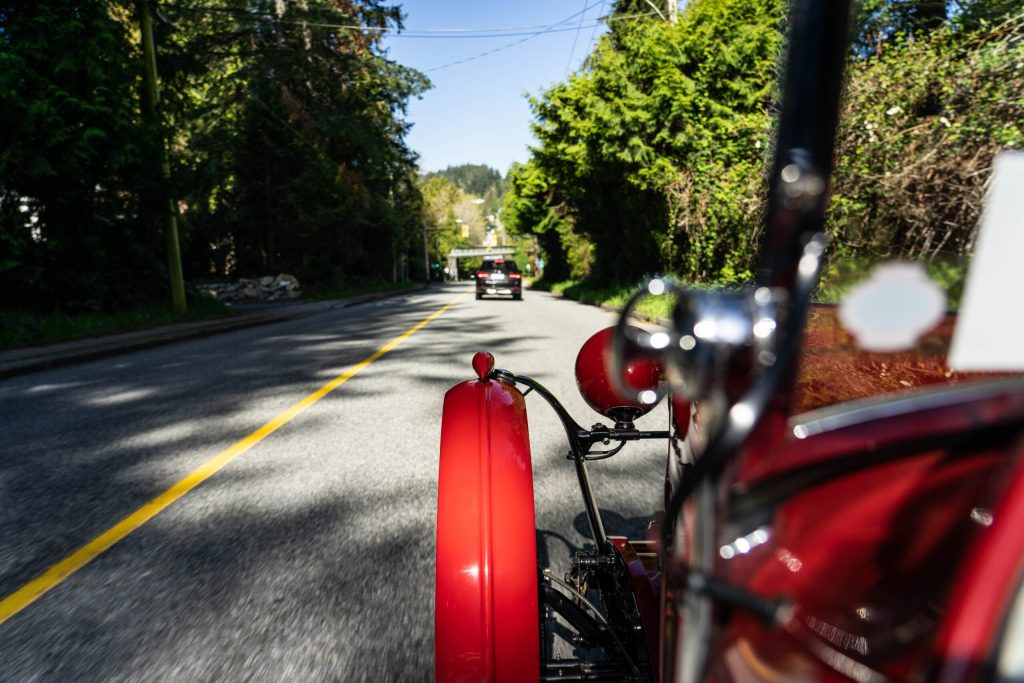
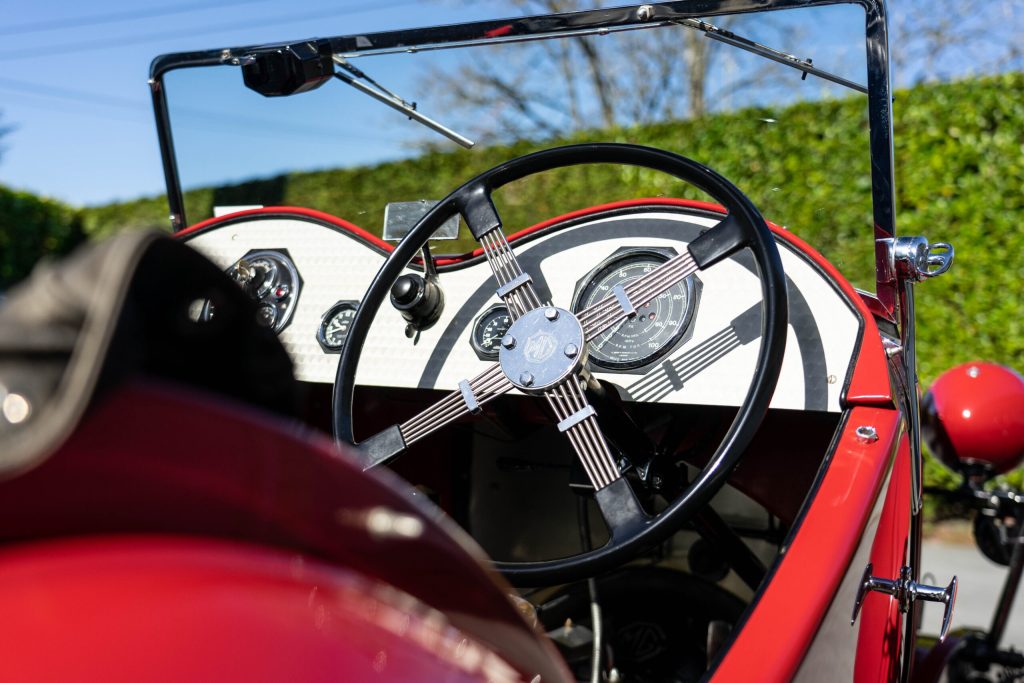
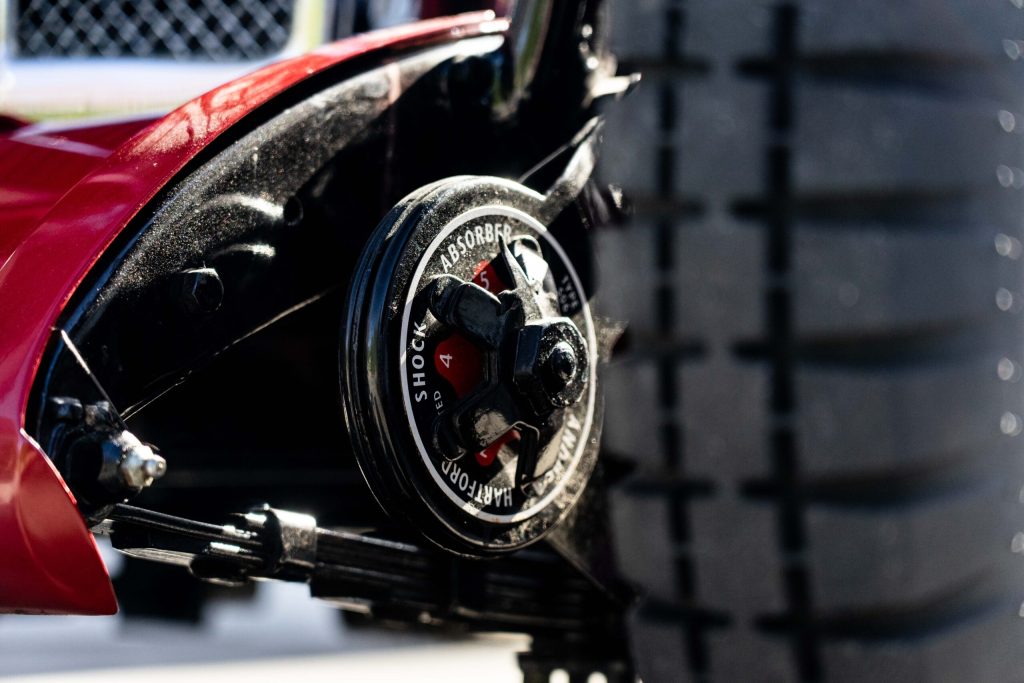
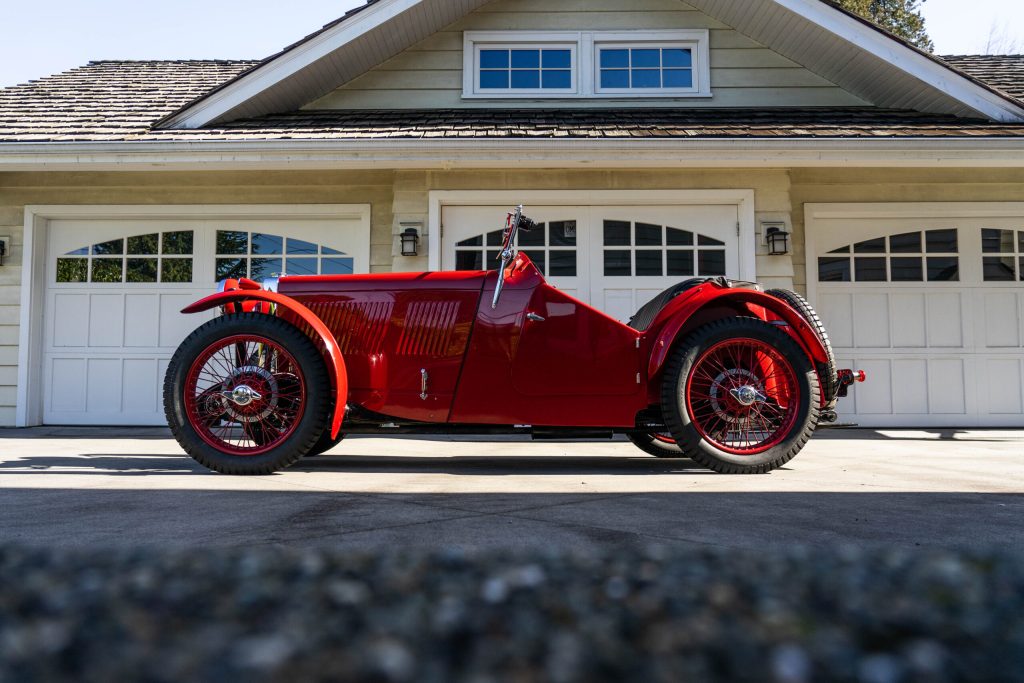
Like many sports cars of the era, the J2 was all about preserved momentum – using everything the chassis had, skittering through corners at the limit of those narrow tyres. The model was a club-racing favourite in period, its unsynchronised “crash” four-speed gearbox requiring expert handling in order to wring every last horsepower from the engine.
Driving a J2 on today’s streets is like flying a Sopwith Camel around people snoozing in passenger jets. As with air travel, modern machines are more competent, but they’re also sensory-muffling cocoons. The J2 is bugs-in-the-teeth, front-line motoring.
MG built J2s only for three model years, from 1932 to 1934. Happily, however, the company preserved the car’s gleeful driving experience in later models, and into the modern era.
Strength in Numbers
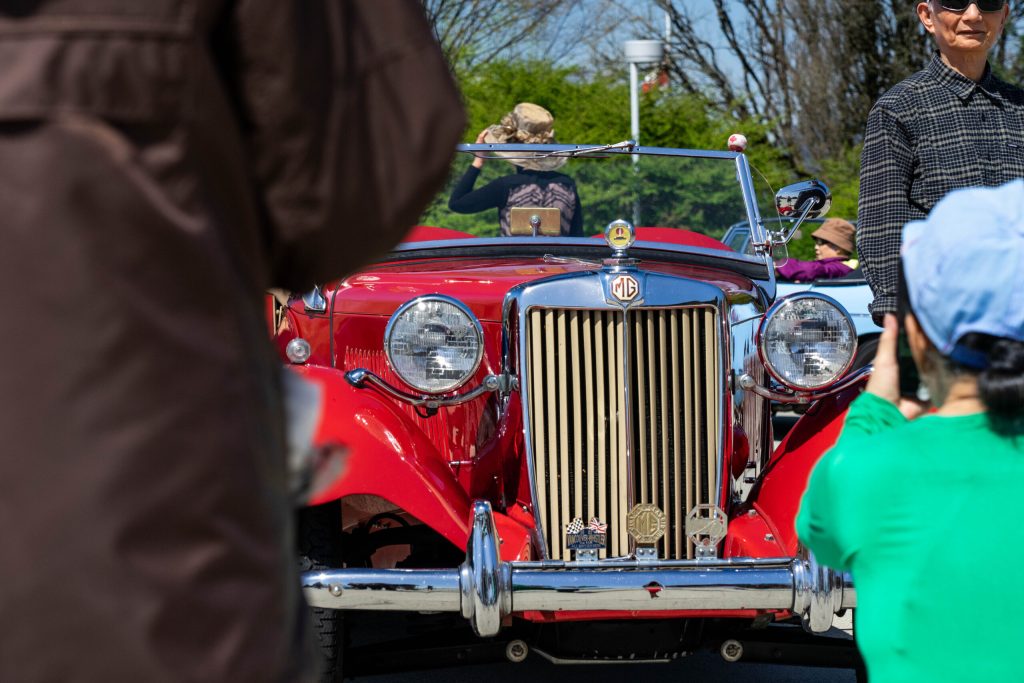
MG TC (1945–1949) Midget, MG TD (1950–1953) Midget
Malcolm Stanton lists off previous British machines he’s owned. “A 1933 MG PA. A Jaguar XJ6 S1. A Tiger Moth . . . ”
Wait. A Tiger Moth? The biplane?
As it turns out, Stanton is retired Royal Canadian Air Force, and so his desire for an MG T-series makes all the sense in the world. This generation of MG Midget, which learned its Ps and Qs from the J2, ran over five letter designations – TA, TB, TC, TD, TF – from 1936 to 1955. (McAleer, that “Ps and Qs” line is a lovely prewar MG pun that maybe five people will get, and your edit staff salutes it – Ed.) For thousands of people around the world, the T-type was the introduction to MG.
Stanton’s highly original ’48 TC accomplishes the trick in a quick lap around the block, galvanising a flock of elementary-school children out for a walk. The youngsters goggle and murmur. “Nice car!” one yells.
A T-series looks like something out of a Richard Scarry Busytown book. It has a friendly bug-eyed face, sweeping separate fenders, and classic proportions. Compared to looming modern crossovers, it looks like something an anthropomorphic rabbit would speed around town in. (“Oh hello, Sergeant Murphy, what seems to be the problem?”)
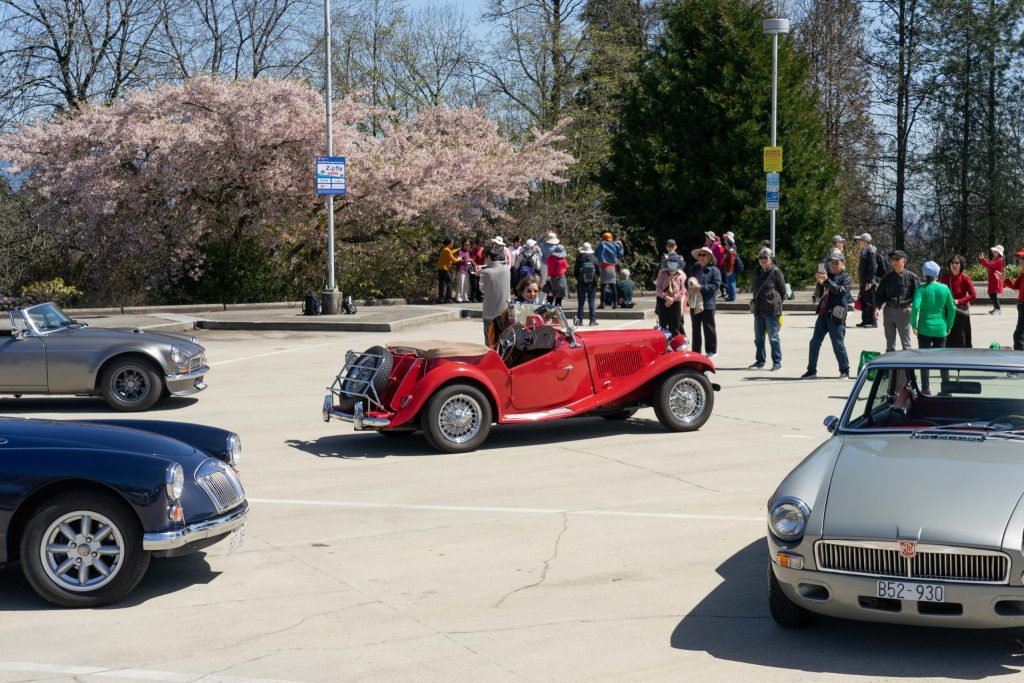
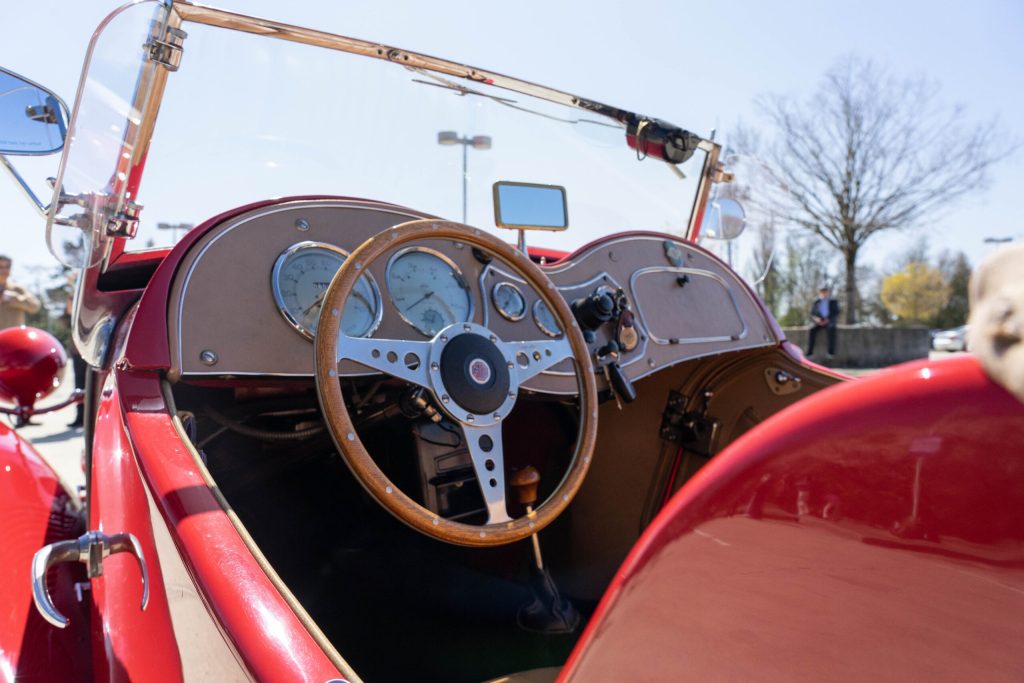
The T-series, primarily the 54bhp TC, is largely credited with America’s postwar sports-car boom. A decades-long import wave of British sports cars, from the late 1940s to the middle 1970s, began with returning GIs shipping used MGs across the Atlantic on their way home. A majority of the T-series built were exported, specifically across the Atlantic, where they found favour for their blend of charming anachronism, quirky yet sporting behaviour, and ease of repair.
The 54bhp TD, released in 1950, was the TC idea updated – improvements included swapping the latter’s solid front axle for independent suspension, and its wear-prone steering box for a rack-and-pinion arrangement. In many ways, the TD feels far more conventional to drive. Allan Donaldson’s first-year example still carries an air of biplane, but it stops and goes with aplomb. You get to play out your Nigel Shiftright fantasies while tootling around in a car at least as competent in traffic as an air-cooled Volkswagen Beetle.
Donaldson notes the camaraderie of his local pre-1956 MG group, a club-within-a-club of MG owners, as part of the joy of TD ownership. “And when I drive it, you always see people smile.”
Curves, Hips, and a New Line
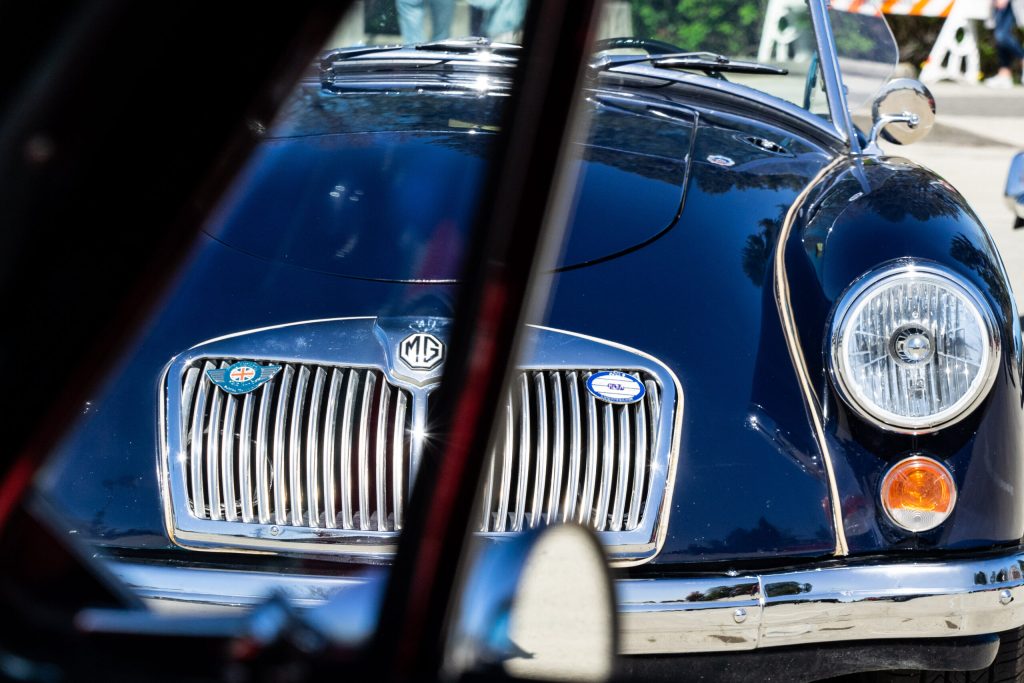
MGA (1955–1962)
Gathered at Queen Elizabeth Park in the centre of Vancouver, our assortment of MGs was promptly mobbed by tourists. At first, the situation was a bit annoying – clean photography was virtually impossible. But the excitement that these cars can still produce neatly emphasised how the marque’s relatively common offerings were, and are, just as special as rarer breeds.
The 68bhp MGA 1500, introduced in 1955, was the first properly modern MG. Gone were those separate, sweeping fenders and the wooden body frame, replaced by a stout steel chassis and a steel body with aluminium skins on the doors, bootlid, and bonnet. Gone too was the prewar-born, pushrod, cam-in-block four-cylinder, replaced by a more efficient and more powerful pushrod four of postwar design. The MGA began life with 1489cc but was later offered with a 1588, a 1622, and even a twin-cam head.
By the mid-1950s, even the most modern T-series, the TF, felt long in the tooth, a sort of tweedy cosplay paying tribute to a vanished time. The A charted an entirely new course.
Low-slung and streamlined, an MGA remains one of the prettiest cars to come out of the UK. Owner Steve Kaufman always had a fondness for the Jaguar E-Type; the MGA, he says, appeals in a similar way. He’s right – but where you expect the E-Type to be beautiful because everyone has been saying as much for decades, the MGA’s good looks kind of sneak up on you.
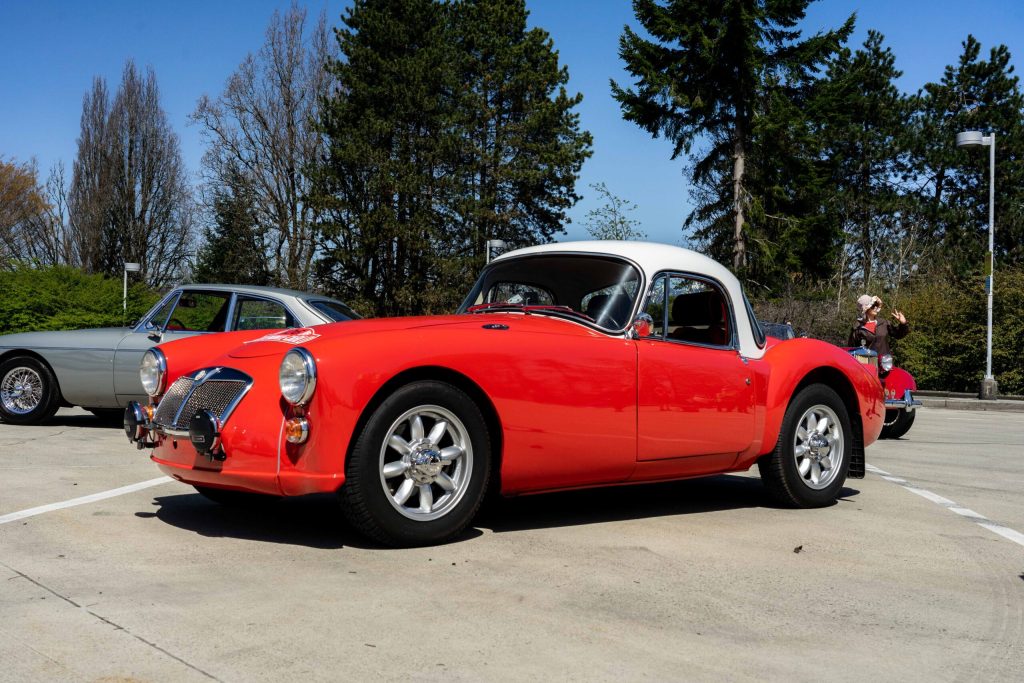
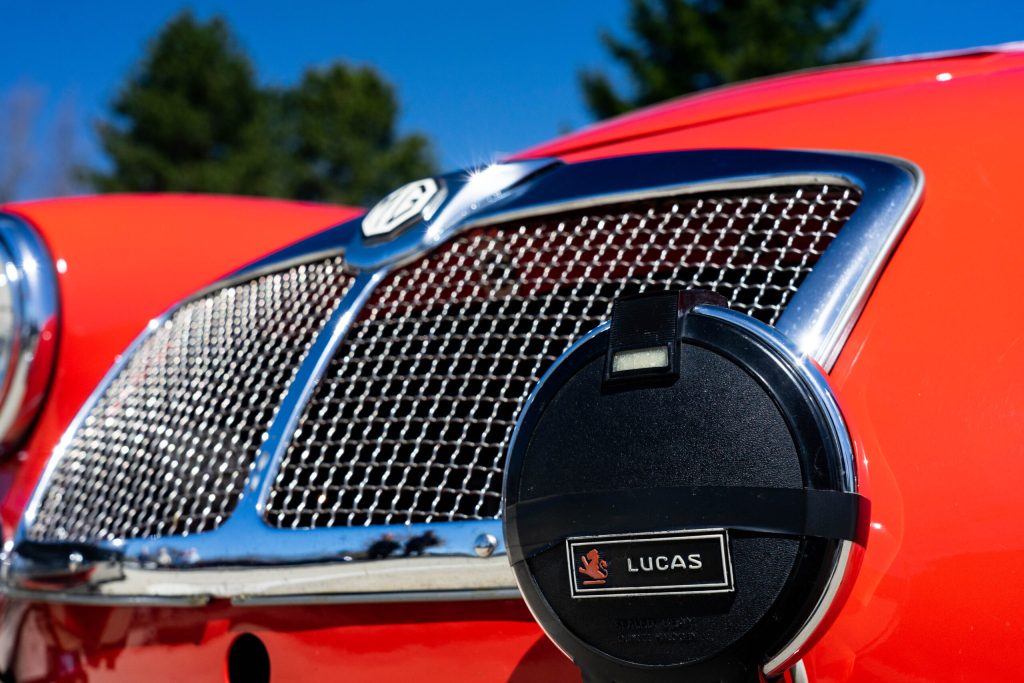
Kaufman’s sapphire-blue 1960 example is his fifth MGA. He’s put 53,000 miles on the clock in just a few years of ownership. A previous MGA took him on a near-complete circumnavigation of the United States. Driving in tandem with another ‘A, the only fault observed was a failing generator. Thousands of miles were travelled with no other issues.
Kaufman’s car is smooth and torquey, a leap in refinement over any T-series. But it’s also compact and nimble, light on its feet and capable of whipping up considerable breeze in the cabin. The power, suspension, and brakes are modern enough to provide confidence when setting out on a road trip, but the combination still feels special enough to make any road trip seem like a proper adventure.
The MGA has considerable pedigree in both rally and road-racing competition. The platform is still a favourite among vintage racers, sturdy and well understood. At our little gathering, Peter and Anne Tilbury brought along the latter’s rally-tribute red-and-white MGA. (Peter has an MGA, too.) The pair rattle off all sorts of East African Safari Rally insight, and they have fitted the car with period-correct stopwatches and a rare Halda trip meter.
B for Basic, Balanced, Best-Selling
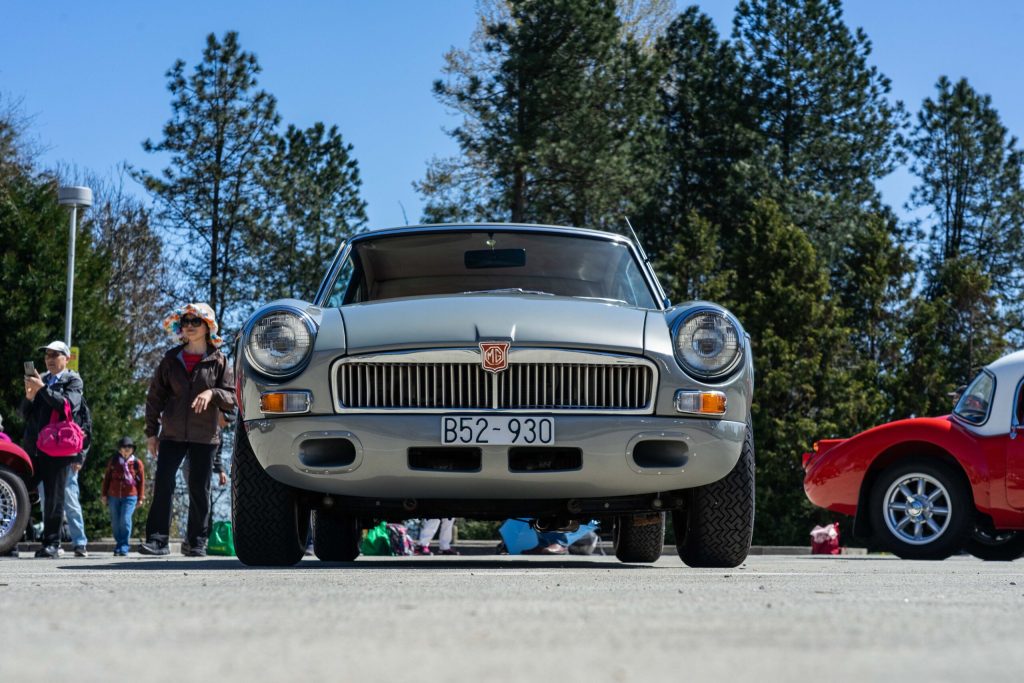
MGB (1962–1980), MGB GT (1966–1974), MGB V8 (1973–1978)
The MGB, offered through the years in several flavours and discontinued in 1980, was the last gasp for MG in North America. (At least officially – the federal government allows for personal importation of later MGs so long as the car is at least 25 years old.)
Think the T-series had a long run over that five-letter era? The B also lasted nearly 20 years on sale. By the end of that run, federal safety and emissions regulations had morphed the car into a high-riding, low-powered, rubber-bumper version of its former self. (That said, perhaps the marketing department missed a trick by not calling it MGB Dakar? MGB Raptor? Hold that thought: We’ll be measuring under the bonnet for engine swaps in a minute.)
Take a gander at Eric Hutton’s Iris Blue 1965 MGB, a class winner at a local car show. This is the B as it was meant to be, in its earliest and simplest form, a great-looking roadster with an enlarged, 1.8-litre version of the MGA’s four-cylinder. Progress from A to B was evolutionary rather than revolutionary, but that was kind of the point. With early Bs, the main change came in looks and the lack of a separate chassis; the MGB was MG’s first monocoque car.
Having spent many hundreds of miles behind the slightly floppy vintage Bakelite wheel of an MGB, I can report that it’s one of those cars whose personality develops as you spend time with it. This isn’t a fiery Alfa Romeo Spider or some steely-eyed BMW – it’s a budget-oriented British roadster engineered with thrift and assembled with occasional indifference. Owning a ‘B and keeping it running inevitably requires ironing out some of the kinks.
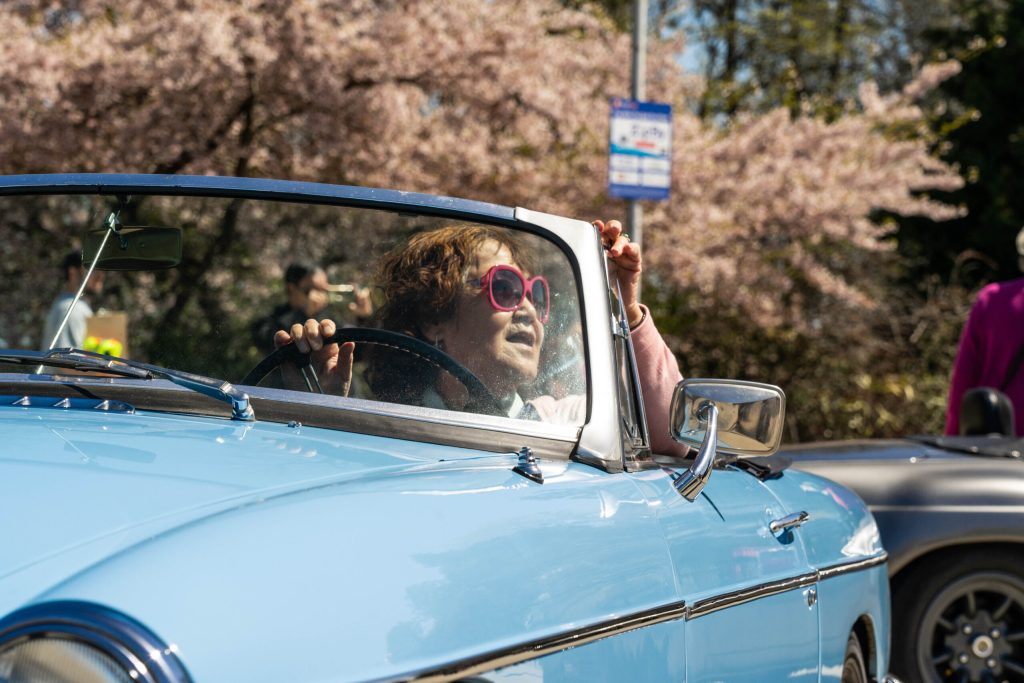
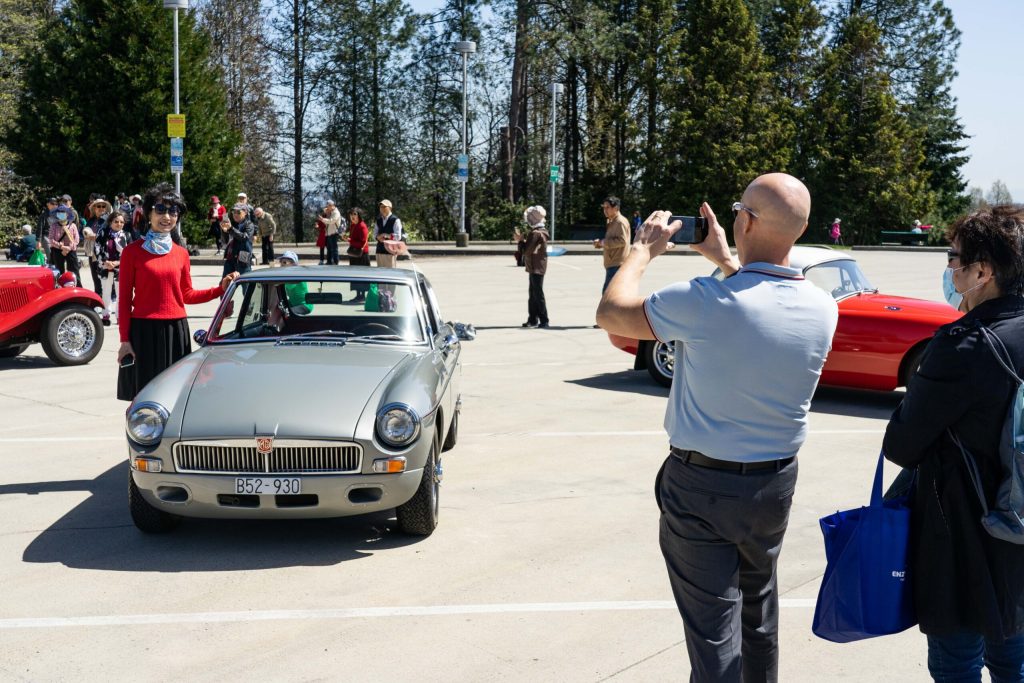
Which is part of the fun! Most of the time! MGBs respond best when an owner has put in the time to crawl around and underneath, and to go through the parts catalogue. Which you don’t get in a Toyota Camry, but then, no one has ever written an internationally famous pop song about a Camry. Rush’s “Red Barchetta” was inspired by a Road & Track story written about a 1967 MGB.
This is the experience of owning a more precious vintage machine, just more accessible. Charles Boname’s 1969 MGB GT, the factory coupe model, underlines the point twice. Painted Silver Birch over a crimson interior, it’s absolutely stunning. Boname jokes that the car is his take on a poor man’s Aston Martin, but there’s nothing poverty-spec about his build. The BGT was styled in part by Italian design house Pininfarina, and it looks the equal of other grand tourers from that name.
And then there’s Simon Austin’s 1977 MGB, a home-brewed salute to the rare factory V8 variant. Like those cars, Austin’s MG wears a 3.5-litre Rover V8, but he’s added widebody wings inspired by six-cylinder factory MGC racers. MG never offered V8 ‘Bs in North America, but Austin’s what-might-have-been creation sounds and looks fantastic. It thunders down the road with a very un-MG surfeit of power while remaining a very pleasant cruiser.
You wouldn’t think of doing a swap like that with an E-Type roadster. But that’s the fun of an MG – the company made a lot of cars, most of them aren’t precious, and you can probably afford one. For a hundred years, that badge has been installed on machines that are what you make of them, that become part of adventures, that remind owners of their youth.
Any MG, no matter how humble, lands that rarest of automotive attributes: It is common and uncommon at the very same time.
Check out the Hagerty Media homepage for daily news, features, interviews and buying guides, or better still, bookmark it.








Excellent article
What happened to the MK 3 Midget?? Probably the most the best small sports car made in the UK..!
Many happy hours spent behind the wheel of an MGB GT love love love
Over 100,000 miles in MGBs in 1970s. First was used everyday to drive to university. It had dome 135k when I sold it and it literally never let me down. I always serviced it every 3k and all maintenance was carried out to avoid problems. This was followed by another rubber bumper roadster. Kept it a year 22k later: needed a deposit for a house. That wasn’t the end of it though. Bought a CGT. They were cheap then. Couldn’t afford the fuel so it had to go. Had a BGT, bought for £150, yes they really were that cheap it you accepted the flaky edges. That was followed by a final chrome bumper roadster which I restored from ground up and kept for 22 years. I am fortunate to have a great car collection now but when I see a good MGB I still hanker after the simplicity of a former age and it brings back the great memories of great times in my MGs.
…let the numbers still on the road be their measure
You’re forgetting about the MG saloons. All just a bit more exciting to drive rather than the family workhorses.
What happened to the MG midget ??
MG TC my favourite. Never owned one. So Why ?
Why no review of the C? That makes a total bollocks of the whole article.
MGA, MG SV, MG ZS (the proper one) and MG ZTT. In that order.
In 2921 I bought a 21 plate metallic black MGZS Exclusive (thats the one with all the bells and whistles) demonstrator with 437 miles on the clock ⏰ for £19,000.
I part exchanges A Ford Focus with 47,000 miles on the clock and they gave me £2,000.
What a bargain. I’ve had it now for 21/2 years with no problems. Yes I know it’s made in China 🇨🇳. We seriously fucked up the car industry in the UK.
But Hey, I’m well pleased with the car.
Must be that unique blend of British / US which was the MGB GT V8. Owned one for about 8 years, a great car. Continuing the theme I now own two old (1929 & 1933) MGs both fitted with non-original engines. A J2 with a Ford 1172cc side valve; and a MMM Midget with a Riley Nine twin cam engine. Both real fun cars.
1st J2: favourite TC HST special award 1963; next MGA twin cam coupe 1972 to today; never finished ; next MGBGT V8 to today. This car was made very welcome in USA from 1970 to 1980 with various show awards
Poor article. Why no mention of MGs string of world record achievements of the 1930s. Not even a mention of its finest racing machines the J4, Q type, K3, NE and the R type. It is these achievements that really put MG on the map.
MG at 100. An interesting article. I’m the secretary of MOBC (Midge Owners and Builders Club) http://www.mobc.co.uk/ The Midge is a Triumph Herald based ‘rebody’ intended to replicate, as best we can, the MGJ2. I hope to replicate part of this article in our quarterly magazine
It wasn’t the best but for affection my 1936 TA was fantastic, I have had MGB TF now TD2 also like correspondent had Tigermoth for nearly 50 years
My first car was a ’72 MG Midget, purchased new for $2700. It was so nimble and responsive, my favorite to this day! Round rear wheel arches… so stylish!
I have driven an MGBGTV8 for 19 years. Great Q car. Do all my shopping in it. It makes a lovely rumble without the middle box. Change emgine oil every 3,000 miles and check gearbox level also. Always start off in second gear then 4th at 25mph then O’drive at 30. 30mpg easy. Many SUV’s can’t do that.
Can not choose one, the 1955 TF, the MGA twin cam, and the early 69 to 72 B
What happening to the true poor man’s mg, the mark 3 midget, the most driving fun you can have on a b road .
What’s with the strange layout?
I love the MGC BUT YOU DONT SEEM TO KMOW ABOUT IT.
You haven’t mentioned all the cars from the 1980s to the present day? The Metro 6R4 or awesome Z cars deserve a mention. Or the BTCC championship winning MG6. Plus there’s some sporty performers in the current EV range. More info on The MG Lifestyle page at Facebook.
Never mentioned the last MG sportsters F,TF and TF Le
Just a quick note – as-noted, this gathering was done across the Atlantic, where there is very little post-1980s MG, apart from grey market cars (a Swiss MG ZT wagon has just turned up local to me). MGCs are very thin on the ground in Canada, The intent here was not to crown the best MGs, but just to pay tribute to a selection of them. Apologies if your fave didn’t appear, as I couldn’t possibly include every MG, and each MG model is *somebody’s* favourite.